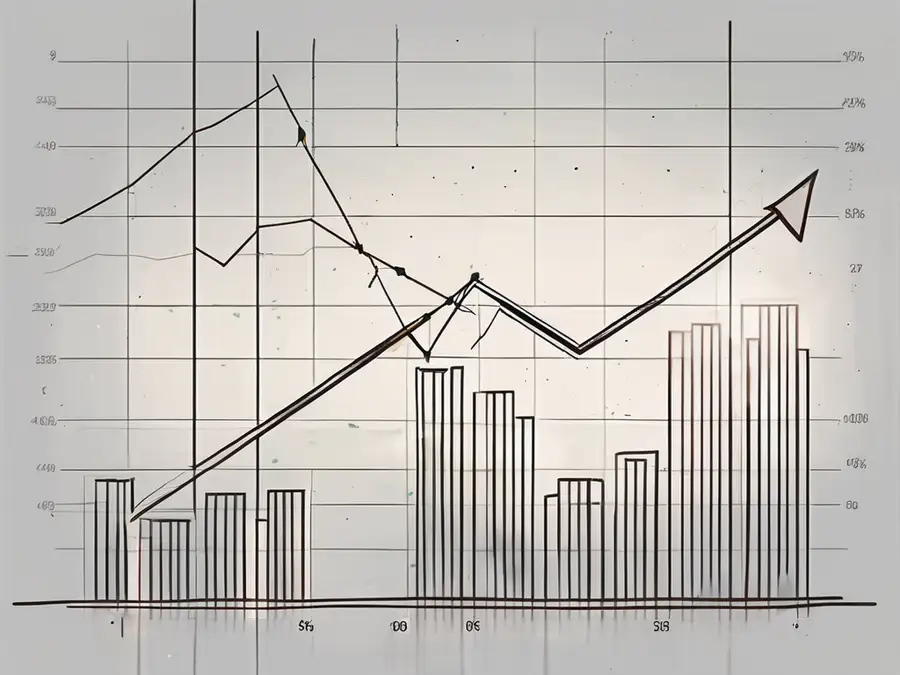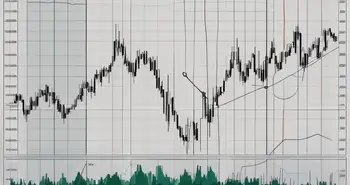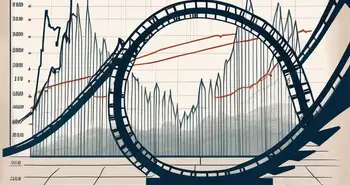Share Price Components Explained

As an expert in the field, I'm here to demystify the concept of share prices and provide you with a comprehensive understanding of this crucial aspect of the stock market. Whether you are a seasoned investor or someone new to the world of finance, this article will equip you with the knowledge you need to navigate the intricacies of share prices confidently.
Understanding the Basics of Share Price
Let's start by establishing a solid foundation and gaining clarity on what exactly share price entails. In simple terms, share price refers to the value at which a single share of a company's stock is traded on the stock market. It is the monetary reflection of market sentiment and a key indicator of a company's financial performance.
Definition of Share Price
In technical terms, share price represents the last reported transaction price of a company's stock on the exchange. It fluctuates throughout the trading day as buyers and sellers engage in transactions, reflecting changes in supply and demand dynamics.
Importance of Share Price in Stock Market
Share prices hold immense significance in the stock market. They reflect investors' perceptions, expectations, and evaluations of a company's future prospects. A rising share price signifies positive market sentiment, confidence in the company's growth potential, and an indication of its solid financial performance.
Conversely, a declining share price may indicate concerns, uncertainty, or unfavorable market conditions surrounding a company. Analyzing share prices can provide valuable insights into the overall market sentiment and investor sentiment towards a specific company or industry.
Factors Influencing Share Price
Now that we have a basic understanding of share prices, it's essential to explore the factors that influence them. Various elements shape a company's share price movements, including:
Company Performance and Share Price
A company's financial performance is a primary driver of its share price. Positive revenue growth, profitability, and strong management strategies often translate into higher share prices. Investors seek companies with consistent track records of delivering strong financial results, resulting in increased demand for shares and potentially driving up prices.
However, adverse developments, such as declining profits or market share, can adversely impact share prices. It is crucial to closely monitor a company's financial reports and assess its performance before making investment decisions.
Market Sentiment and Its Impact on Share Price
Market sentiment, collective investor emotions and perceptions, plays a significant role in determining share prices. Positive news, such as record-breaking earnings or favorable industry trends, can elevate market sentiment and drive share prices upwards.
Conversely, negative news or economic uncertainties may lead to a decline in market sentiment and subsequently drag down share prices. It is crucial to stay informed about market developments and sentiment trends to make well-informed investment decisions.
How Share Prices are Calculated
Understanding the mechanics behind share price calculations is vital in comprehending market dynamics. Several factors contribute to share price movements, and two primary influences include:
Role of Supply and Demand in Share Pricing
Supply and demand dynamics fundamentally drive share prices. When there is high demand for a company's stock and limited supply, the share price tends to increase. Conversely, when supply exceeds demand, share prices may decrease.
This delicate balance between buyer demand and seller supply is continuously evolving in response to market conditions, investor sentiment, and financial performance.
Impact of Dividends on Share Price
Dividends, which are regular payments distributed to shareholders from a company's earnings, can influence share prices. Companies that consistently pay dividends often attract income-seeking investors, which can drive up demand and consequently increase share prices.
Moreover, dividend growth over time can strengthen investor confidence in a company's stability and future prospects, leading to higher share prices.
Reading Share Price Charts
Interpreting share price charts can provide valuable insights and inform investment decisions. By analyzing price fluctuations and trends, investors can identify potential buying or selling opportunities.
Understanding Price Fluctuations
Share prices rarely move in a straight line. Rather, they experience fluctuations influenced by various market factors. Analyzing these price movements allows investors to gauge the level of market volatility and potential risks associated with investment decisions.
Volatility may present opportunities for short-term traders, while long-term investors may take a more strategic approach, focusing on trends and sustainable growth.
Interpreting Share Price Trends
Identifying long-term trends in share prices is crucial for investors looking to make informed decisions. Upward trends can indicate positive market sentiment, increased demand, and potential growth opportunities. Conversely, downward trends might signal investor concerns or unfavorable conditions.
Technical analysis tools, such as moving averages, can help investors identify patterns and make more informed decisions based on historical price data.
The Role of Share Price in Investment Decisions
Understanding the significance of share price when making investment decisions is paramount for any investor. Consider the following factors:
Share Price and Investment Risk
Share prices are directly related to investment risk. High share prices can indicate a company's strong financial performance but may also come with increased risk. On the other hand, lower share prices may present opportunities in undervalued assets but require careful evaluation.
An expert investor knows that thorough company analysis, together with an assessment of share prices, helps strike the right balance between risk and reward.
Share Price as an Indicator of Company Value
Share prices can serve as a barometer for a company's perceived value in the market. Investors often consider share price in combination with other fundamental and technical indicators to assess a company's worth.
Investors should be cautious about relying solely on share prices as the sole criterion for evaluating a company's potential. A comprehensive analysis, including financial statements, competitive positioning, and industry trends, is crucial for a well-rounded evaluation.
My Personal Advice
Throughout my journey as a seasoned investor, I've learned that understanding share prices is an essential aspect of successful investing. It is tempting to get swept up in the excitement of rapidly rising share prices or succumb to despair during market downturns. However, a balanced approach based on thorough research, analysis, and risk assessment is key to long-term success.
Remember, investing should be approached with a realistic perspective and a firm understanding of both the risks and rewards involved. Building a diversified portfolio and staying informed about market trends and company performance are crucial steps towards making informed investment decisions.
FAQ
What is a share price?
A share price represents the value at which a single share of a company's stock is traded on the stock market. It is influenced by factors such as company performance, market sentiment, and supply and demand dynamics.
How are share prices calculated?
Share prices are determined by the balance between supply and demand for a company's stock. When demand exceeds supply, share prices tend to increase, while an excess supply can lead to price declines. Additionally, dividends and market sentiments can also impact share prices.
Why are share prices important?
Share prices are significant in the stock market as they reflect investor sentiment, market expectations, and a company's financial performance. They provide insights into the overall market sentiment and can help gauge an investor's confidence in a particular company or industry.
Can share prices be used to make investment decisions?
Yes, share prices can assist investors in making investment decisions. They can serve as indicators of a company's value, financial health, and growth potential. However, it is essential to consider other factors such as financial statements, industry trends, and risk assessment when making investment decisions.
What is the role of share prices in risk assessment?
Share prices can provide insights into the level of investment risk associated with a particular company. Higher share prices may indicate a stronger financial performance but may also carry increased risk. Lower share prices may present opportunities for undervalued assets but can also signal potential risks.
How can I interpret share price charts?
Interpreting share price charts involves analyzing price fluctuations and trends. This analysis can help identify patterns, market volatility, and potential investment opportunities. Technical analysis tools, such as moving averages, can aid in the interpretation of share price charts.
Now that you're equipped with the knowledge of share prices and how they can influence your investment strategies, take your trading to the next level with Morpher. Experience the future of investing on a platform that offers zero fees, infinite liquidity, and the ability to trade a vast array of assets, from stocks to sneakers. With Morpher, you can start with as little as $1, enjoy up to 10x leverage, and trade with confidence knowing your funds are secure in your self-hosted wallet. Ready to transform your trading experience? Sign Up and Get Your Free Sign Up Bonus today and join the revolution at Morpher.com.

Disclaimer: All investments involve risk, and the past performance of a security, industry, sector, market, financial product, trading strategy, or individual’s trading does not guarantee future results or returns. Investors are fully responsible for any investment decisions they make. Such decisions should be based solely on an evaluation of their financial circumstances, investment objectives, risk tolerance, and liquidity needs. This post does not constitute investment advice.

Painless trading for everyone
Hundreds of markets all in one place - Apple, Bitcoin, Gold, Watches, NFTs, Sneakers and so much more.

Painless trading for everyone
Hundreds of markets all in one place - Apple, Bitcoin, Gold, Watches, NFTs, Sneakers and so much more.









